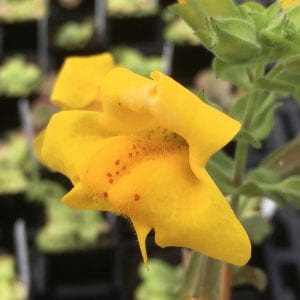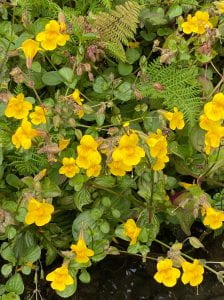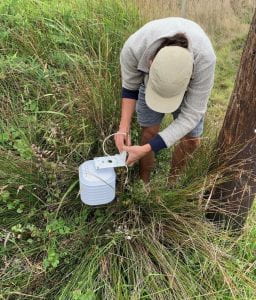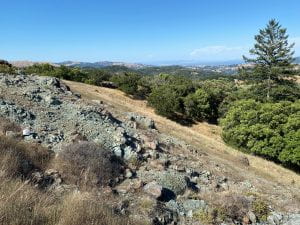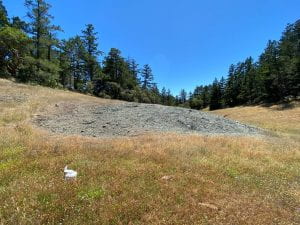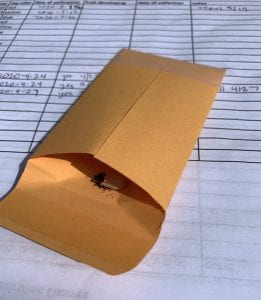Alec shellshocked by the multitude of Mimulus guttatus ecotypes in the Bay area…
Background on Alec’s Project
Alec is using Mimulus guttatus (aka Erythranthe guttata/grandis) as the model system for his Master’s Thesis. This morphologically and ecologically variable species has been intensively studied by the Mimulus Mafia, with much work focusing on the genetic basis of characters that impact variation in life history and adaptation to stressful environments, like serpentine. Despite tremendous variability in the climatic and ecological conditions in which this species can thrive, relatively few studies have focused on field-based research of multiple climatically-divergent populations. In California, populations separated by mere kilometers can experience remarkably different diurnal and annual climate regimes. Alec is leveraging this pattern to test an extension Dan Janzen’s famous ‘Climate Variability Hypothesis’ (1967), which predicts that species exposed to more variable climates will have broader thermal tolerances. Previous MS student in our lab, Nila Le, worked on the coastal California endemic plant the coast rock cress (Arabis blepharophylla, Brassicaceae), and hypothesized that the relatively moderate coastal environment may result in coastal species having narrow thermal tolerances, and hence make them more susceptible global climatic change. Alec is building on this premise by experimentally measuring the thermal niches of six populations from a coastal to inland gradient, with that prediction that coastal populations will have narrower thermal niches than more inland populations. Alec placed paired temperature data loggers at each site for a year to measure microclimatic fluctuations in the field. He collected seeds from multiple maternal families in each of these populations, grew plants in the greenhouse from field seed, randomly crossed families within each population, and then subjected their seedlings to thermal-tolerance trails in growth chambers. Using these data, he is estimating the thermal niche of each population, and then he will use these estimates to parametrize mechanistic species-distribution models to predict the fate of these populations under global climatic change. He is also working with Biology Honor’s student Cate Gwinn to assess the genetic divergence of spatially-close serpentine and non-serpentine populations distributed across Mt. Tamalpais.
Some of the many faces of the seep monkeyflower…
Exploring a serpentine outcrop on Old Stagecoach Rd on Mt. Tam.
Exploring another serpentine outcrop on Mt. Tam, near the West Peak.
Putting in temperature data loggers at a couple of focal sites.
Pine Mountain focal site (foothills North of Mt. Tam) and temperature data logger (they are small, protected inside a solar shield).
Rock Springs (Mt. Tam) focal site and temperature logger.
Mimulus guttatus flowers and fruits.
Prof. Paul chillin’ in a serpentine monkeyflower field while he watches Alec labor in the hot sun…
Back at USF, planting field seeds and later, new seedlings!
Here’s a movie of Alec’s first pollination!!
And the first successfully produced greenhouse seed!
Greenhouse work, pandemic style.
An example of an experimental tray before and after a temperature tolerance trail in the growth chambers. The red dots are used as standards when calculating leaf area.
A happy Alec, after pulling one of David Lowry’s coastal perennial ‘Mimulus‘ individuals from the ground!



